By Islam El Shazly
I have been getting a lot of requests about the recipes for the drinks in our Top 10 Beverages in Egypt post; these are the basic recipes, so you can go ahead and tinker with them to your heart’s content.
If you’re a Muslim, Ramadan 1433 is right at our doorsteps (at the time of writing), and these drinks will come in handy, especially if you’re in North America or in Europe with long summer days of fasting. And if you’re not, then you can still show off your masterful skills at making some great non-alcoholic cocktails and drinks, and be the most exotic of your friends and family.
Bottoms up!
1. Mowz bil-Laban (Banana with Milk) / Jawafa bil-Laban (Guava with Milk):
Here’s something you might not have known: the name banana is derived from Arabic Banan Al-Mowz, since bananas were not known in Europe until they were introduced by the Muslims. Banan means fingers in Arabic. The Portuguese introduced Banana plantations to South America during the 15th and 16th centuries.
Making banana or guava with milk is relatively the same process, only with guava you have to strain it from all the seeds.
Ingredients (serves 2)
- 3 bananas or 3 guavas
- 2 cups of milk
- 4 teaspoon sugar or 1 tablespoon honey
- 1/2 cup of water
- 1/2 cup ice
The Making
- Peel the bananas, cut them, and then place in a blender.
- Add the milk, sugar, and water.
- Blend. Pour. Serve chilled.
To make the Guava with Milk, just replace the bananas with the guava, and don’t forget to strain once done blending. For a spin on that, add both bananas and guavas at the same time, increase the amount of milk and water, and have a cocktail.
2. Qasab(Sugarcane Juice):
We will skip on this one since it requires a special sugarcane juicer. Alternatively; you can always get raw sugarcane sticks, remove the husk, and chew on the pulp. It’s very sticky and very messy, but brilliant all the same.
3. Karakadey (Hibiscus Juice):
Karkadey is the infusion made from crimson or deep magenta-coloured calyces (sepals) of the Hibiscus sabdariffa flower. Source.
It is a great natural way to lower blood pressure.
Ingredients (serves 6)
- 2 cups hibiscus
- 6 cups water
- Sugar to taste
The Making
- In deep pan, bring the hibiscus, water and sugar to a boil.
- Reduce heat and simmer for 15 minutes. Add more water if needed.
- Once cooled enough, pour into bottles or glass jugs, straining it with a fine sieve
- Refrigerate and serve chilled.
4. Tamrhindi (Tamarind Juice):
Tamarind, from Arabic Tamr Hindi (Indian Dates), is the edible, pod-like fruit of the Tamarind tree. The tree itself is indigenous to tropical Africa and is widely distributed throughout the tropical belt. It was heavily introduced to Mexico and South America by Spanish and Portuguese colonists, to the degree that it became a staple ingredient in the region’s cuisine. Source.
Tamarind juice is sour and is only served chilled.
Ingredients (serves 6)
- 1 cup tamarind
- 2 litres water (about 8.5 cups)
- 1 cup Sugar
- 1 teaspoon rose water (optional)
- 1/2 lemon (optional)
The Making
- Place tamarind in a deep large bowl.
- Bring the water to a boil, then pour over the tamarind and add the sugar. Mix well and leave to soak for at least 6 hours, preferably overnight.
- Pour the liquid through a fine sieve into bottles or a large pitcher.
- Refrigerate and serve chilled.
Taste the tamarind before it fully cools down, if it is too sour then you can add more sugar.
For more oomph, mix the hibiscus that you made earlier with the chilled tamarind, and voila.
5. Qamar Al-Din (Stewed Apricot Juice)
Qamar Al-Din has been made in Syria and exported all over the world for a very long time. Traditionally, artisans would juice apricots, add sugar to the juice and then have it boil. They would then pour the juice onto wooden panels that have been brushed with olive oil and leave it to dry in the sun. Once dried, it would be cut into rectangular sheets, and then packaged.
Ingredients (serves 8)
- 300 g Qamar Al-Din, or 3 sheets
- 2 1/2 cups hot water
- 3 tablespoons sugar
The Making
- Cut the Qamar Al-Din into small pieces.
- Boil the water. Turn off the heat.
- Place the Qamar Al-Din pieces into the pot with the hot water, then leave over night.
- Strain the mixture through a fine sieve then add sugar. You can add more sugar if it’s not sweet enough.
- Refrigerate and serve Chilled.
When we were kids, we didn’t even wait for it to be made; we just snatched some of the pieces and ate them as is… Yummy!
6. Sobia (Coconut with Milk):
This crazy concoction is basically what the name says: Coconut with Milk. Only with a twist of rice starch thrown in. It’s found in almost every juice shop all over Egypt. There’s a variation of it that is found in Saudi, and yet another that is made into pudding. This one is refreshingly cool and sweet and Kids love it, which is great on its own.
Ingredients (serves 6)
- 1 cup grated coconut
- 1 litre milk
- 1 cup sugar
- 1 tablespoon vanilla
- 1/2 cup rice starch
The Making
- Soak coconut in milk for 1 hour, add sugar, vanilla, and rice starch and blend in blender!
- Refrigerate and serve chilled.
7. Kharoob (Carob Juice)
Here’s one for ya: Carob was eaten in Ancient Egypt. It was also a common sweetener and was used in the hieroglyph for “sweet” (nedjem). It is also believed to be an aphrodisiac! Source.
The juice looks a bit like tamarind only a bit musky and dark and for some reason the best carob juice is found in Alexandria. It is served cold.
Ingredients (serves 6)
- 2/3 cup sugar
- 6 cups water
- 2 cups carob pieces or powder
The Making
- Stir in the carob, sugar and water in a deep pot over medium heat, and bring to a boil. Let the mixture boil for about 5-8 minutes. If needed you can add more water.
- Remove from heat and leave to cool.
- Strain the juice using a fine sieve. Pour into bottles or a pitcher.
- Refrigerate and serve chilled.
8. Sahlab (Orchid – Orchis Mascula):
Sahlab, also known as salep or saloop, was a popular beverage in the lands of the Ottoman Empire. It is basically made out of dried and crushed Orchis Mascula. Its consumption spread beyond there to England and Germany before the rise of coffee and tea and it was later offered as an alternative beverage in coffee houses. It was very popular in England in the 17th and 18th centuries, only it was made with water not milk at the time. The Ancient Romans had a drink similar to sahlab made out of ground orchid bulbs that was considered to be a powerful aphrodisiac! Source.
Ingredients (serves 2) from www.egyptian-cuisine-recipes.com
- 4 teaspoons sahlab (salep) powder
- 2 cups milk
- Sugar to taste
The Making
- Add the salep and sugar to some cold milk and mix well.
- Bring the rest of the milk to a boil.
- Reduce heat to low, and then add the salep/milk mixture. Stir.
- Wait until the mixture thickens.
- Serve hot.
Go wild and garnish with sesame seeds, shredded coconut, sugar, raisins, and nuts.
9. Strawberry Juice / Mango Juice:
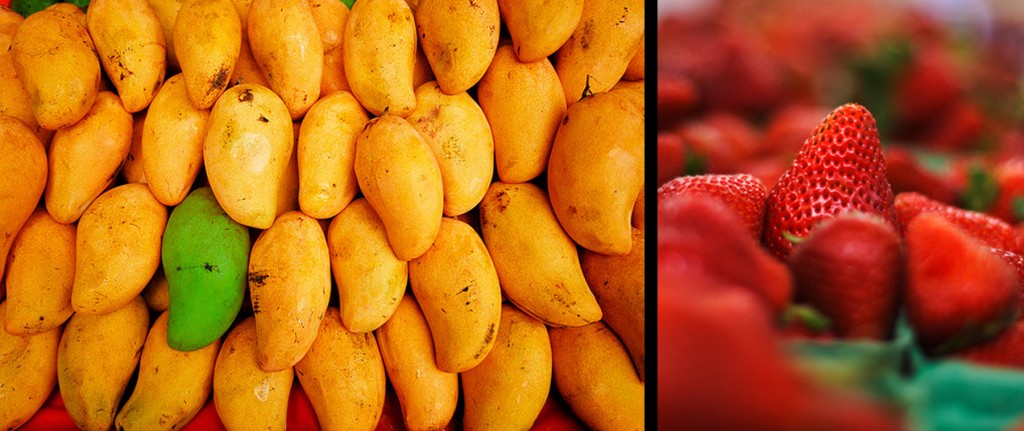
Left: Mangoes by Sarolazmi, on Flickr. Right: Strawberries by Greencolander (Michelle Tribe), on Flickr.
Go to an Egyptian wedding and you are bound to be served strawberry juice or mango juice, or just head on to a juice shop and have a very refreshing, energising pint of fresh mango or strawberry juice. Your day just got better.
Strawberry Juice – Ingredients (serves 2)
- 2 cups fresh strawberries
- 2 tablespoons sugar
- 1 cup water
The Making
- Wash strawberries and halve them.
- Place strawberries, water, and sugar in a blender and blend until smooth.
- Add more sugar if needed.
- Pour into a bottle or a pitcher.
- Refrigerate and serve chilled.
Mango Juice – Ingredients (serves 4)
- 2 large and ripe mangoes
- 2 tablespoons sugar
- 1 cup water
The Making
- Peel and pit the mangoes, discard the seed.
- Place the mangoes, water, and sugar in a blender and blend until smooth.
- Pour into bottles or a pitcher.
- Refrigerate and serve chilled.
10. Watermelon Juice / Cantaloupe Juice:

Left: Watermelon by mynameisharsha (Harsha K R), on Flickr. Right: Cantaloupes by clayirving (Clay Irving), on Flickr.
The cantaloupe originated in India and Africa; it was first cultivated by the Egyptians, followed by the Greeks and Romans. Another first for Egypt! Source.
As for the watermelon, it is believed to be indigenous to southern Africa; however, evidence of its cultivation in the Nile Valley was found from the second millennium BCE. Watermelon seeds have been found at Twelfth Dynasty sites and in the tomb of Pharaoh Tutankhamun.
By the 13th century CE the Muslims introduced watermelons to Europe. Source.
Cantaloupe Juice – Ingredients (serves 8) from www.wasfasahla.com
- 3 cups fresh peeled and chopped cantaloupe
- 1/4 cup lemon juice (optional)
- 3/4 cup sugar
- 8 cups water
The Making
- Place cantaloupe, sugar, and 3 cups water in a blender
- Blend until smooth and then strain through a fine sieve.
- Add to the remaining water and lemon juice to the mixture in a large pitcher and stir until mixed thoroughly.
- Refrigerate and serve chilled.
Watermelon Juice – Ingredients (serves 8) from www.shahiya.com
- 8 kg watermelon – around 1 medium whole watermelon
- 10 tablespoons sugar
The Making
- Peel and cut the watermelon, then remove its seeds.
- In a blender, blend the watermelon with sugar until smooth.
- Refrigerate and serve chilled with some ice.
- Shake the watermelon juice before pouring into serving glasses.
For more delicious recipes please visit:
www.wasfasahla.com Arabic/English
www.shahiya.com Arabic/English
www.egyptian-cuisine-recipes.com English
Head image: sugarcane by romsrini, on Flickr
Tags: Africa, Apricot, Asia, Banana, Canataloupe, Carob, Cocktails, Coconut, Cold, Drinks, Featured, Guava, Hibiscus, Hot, Juice, Mangos, Milk, Orchids, Qamar Al-Din, Recipes, Sahlab, Saloop, Sobia, Strawberries, Sugarcane, Tamarind, Top 10, Watrermelon
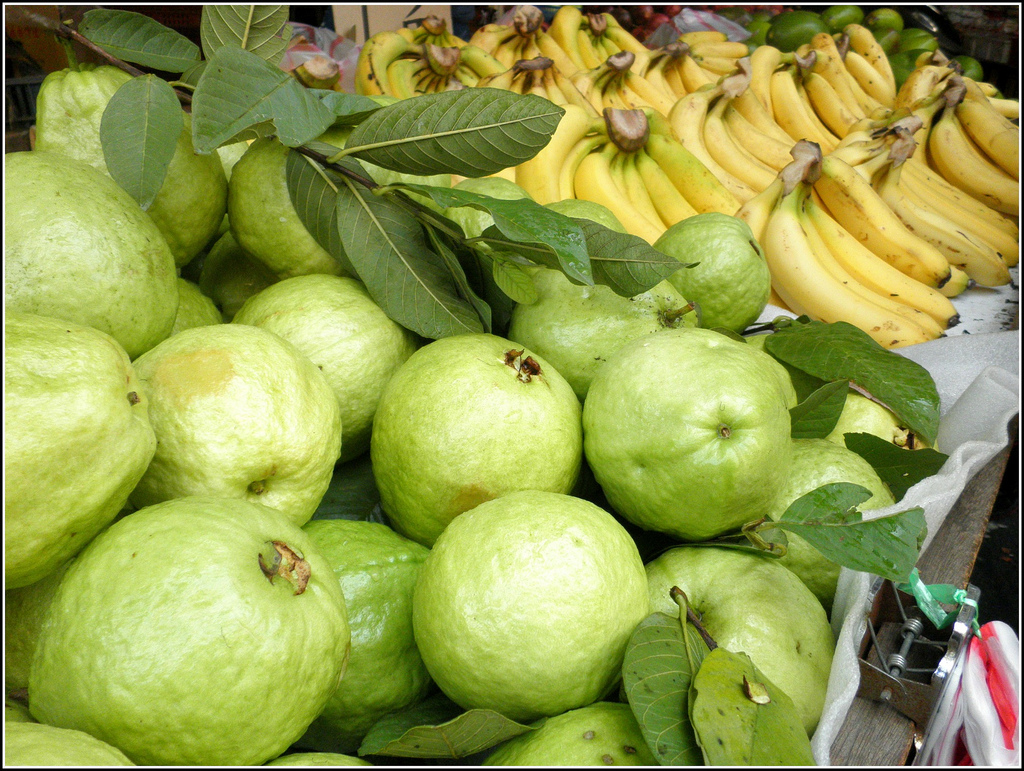
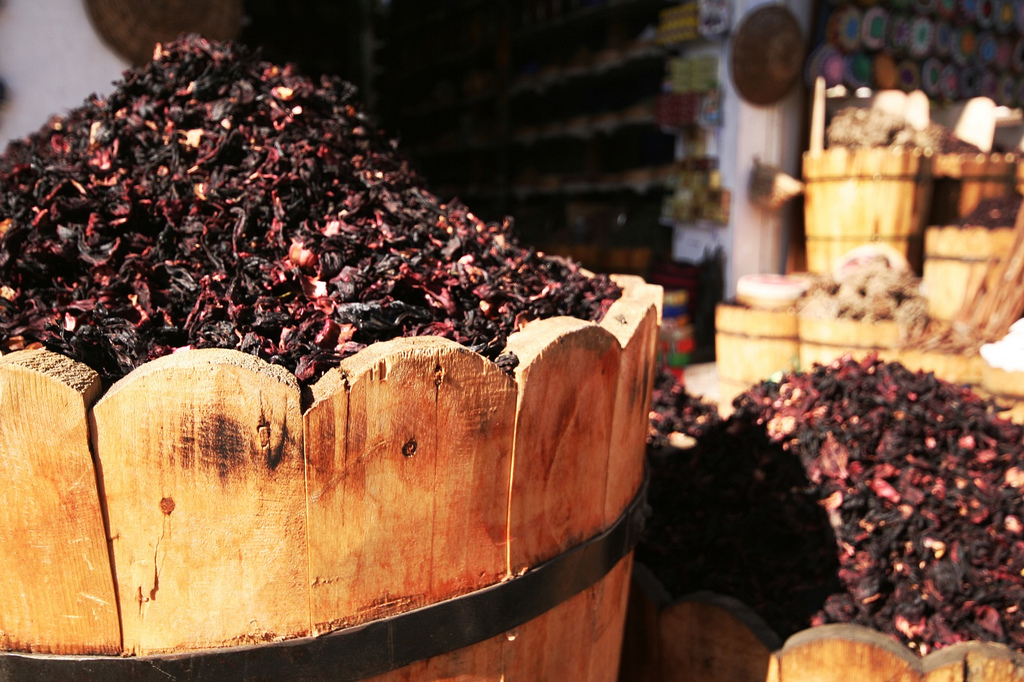
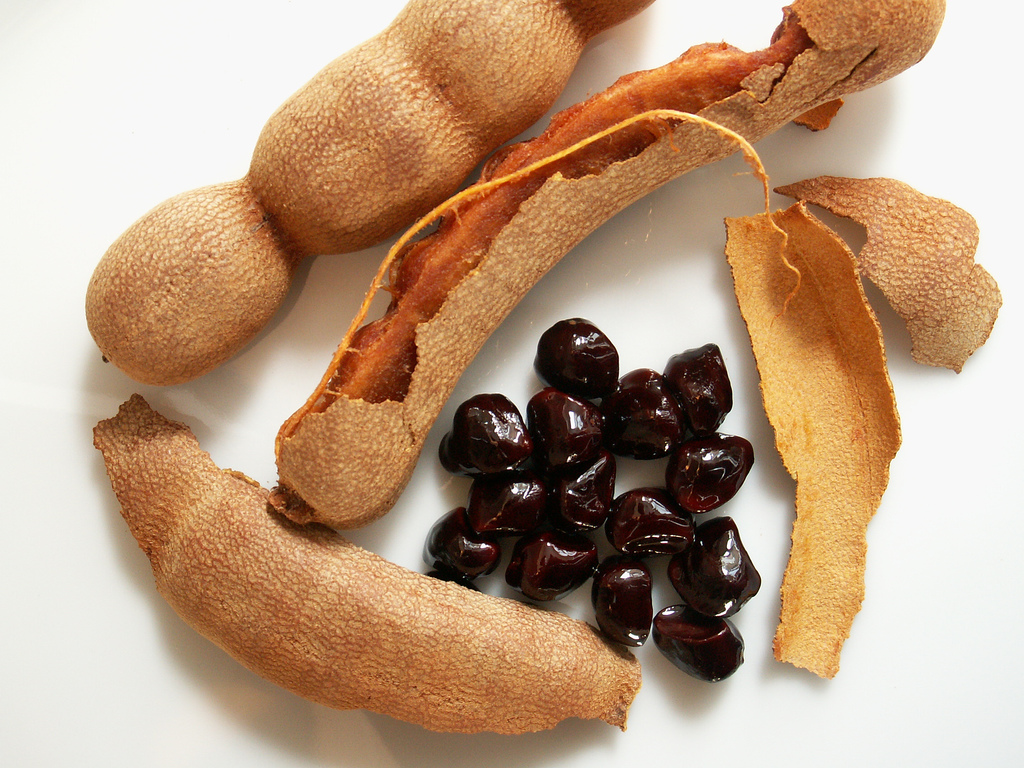
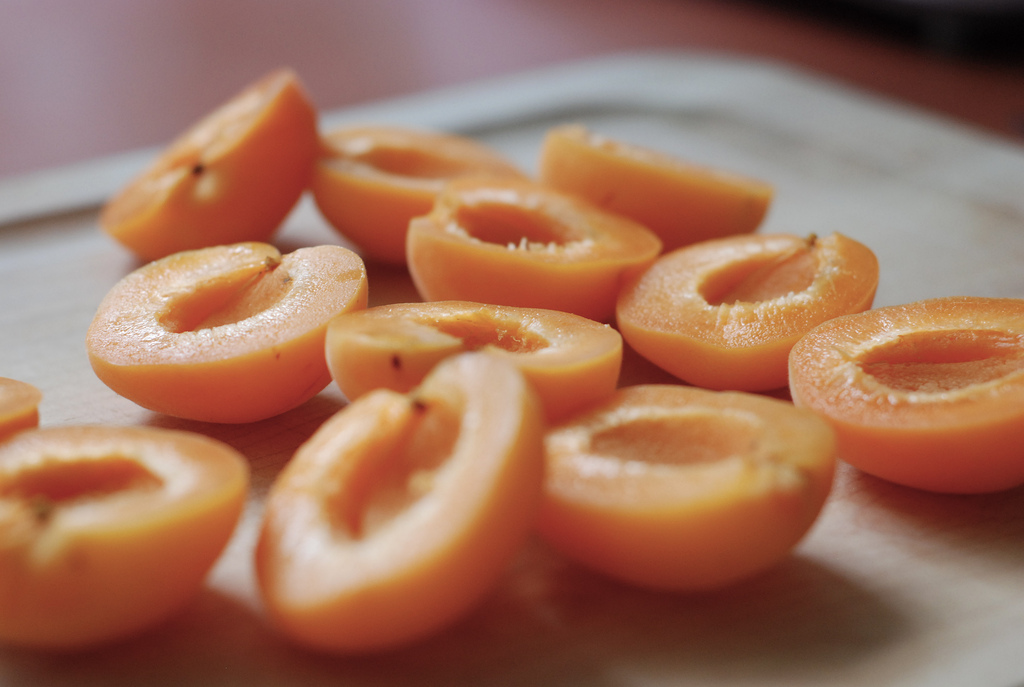
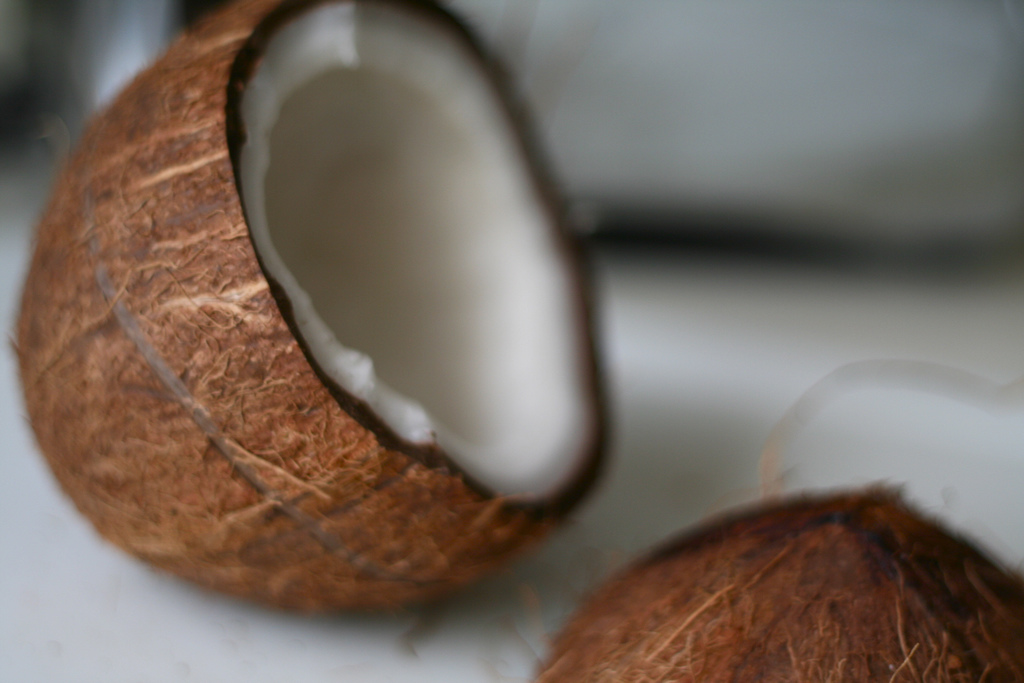
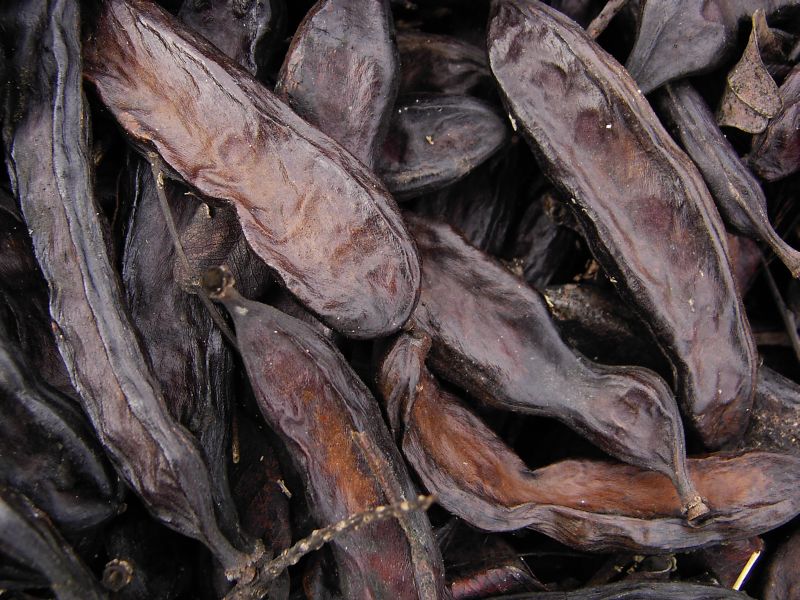
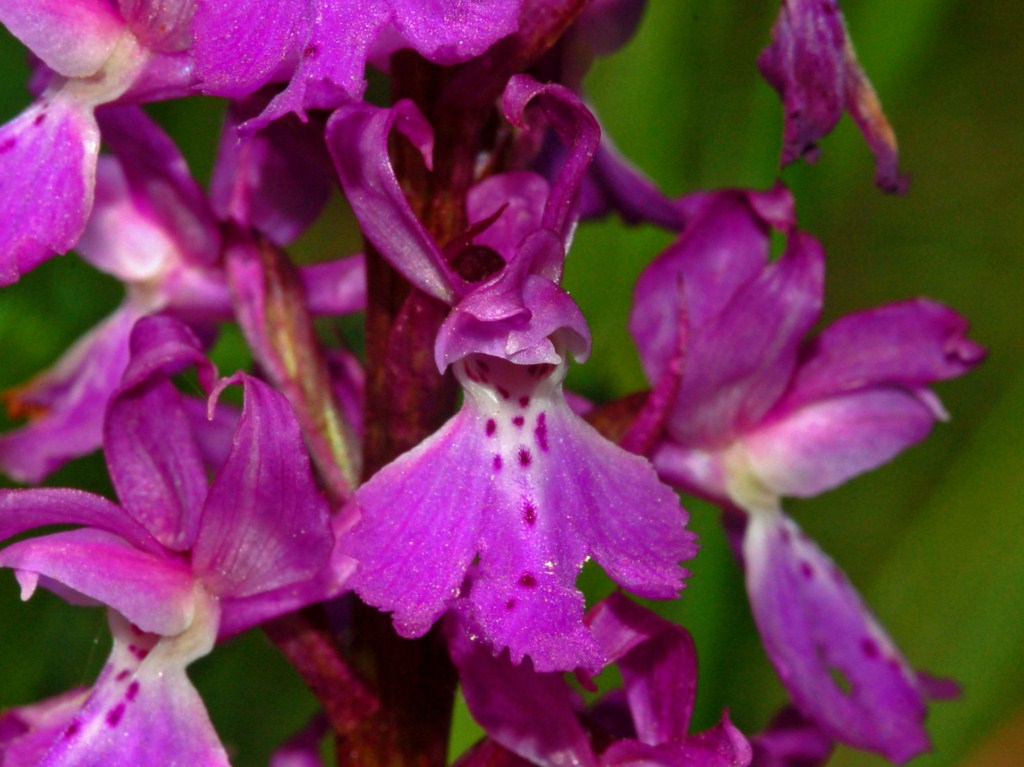








It’s true, they are becoming popular due the fast pace of life in the world these days, a lot of people don’t have the time to make fresh juices or cocktails. They have no idea what they’re missing.
Infused or flavored simple syrups are also becoming more popular, as they add not only the flavor of sugar to drinks, but hold various flavors from herbs, edible flowers, spices, or fruit.